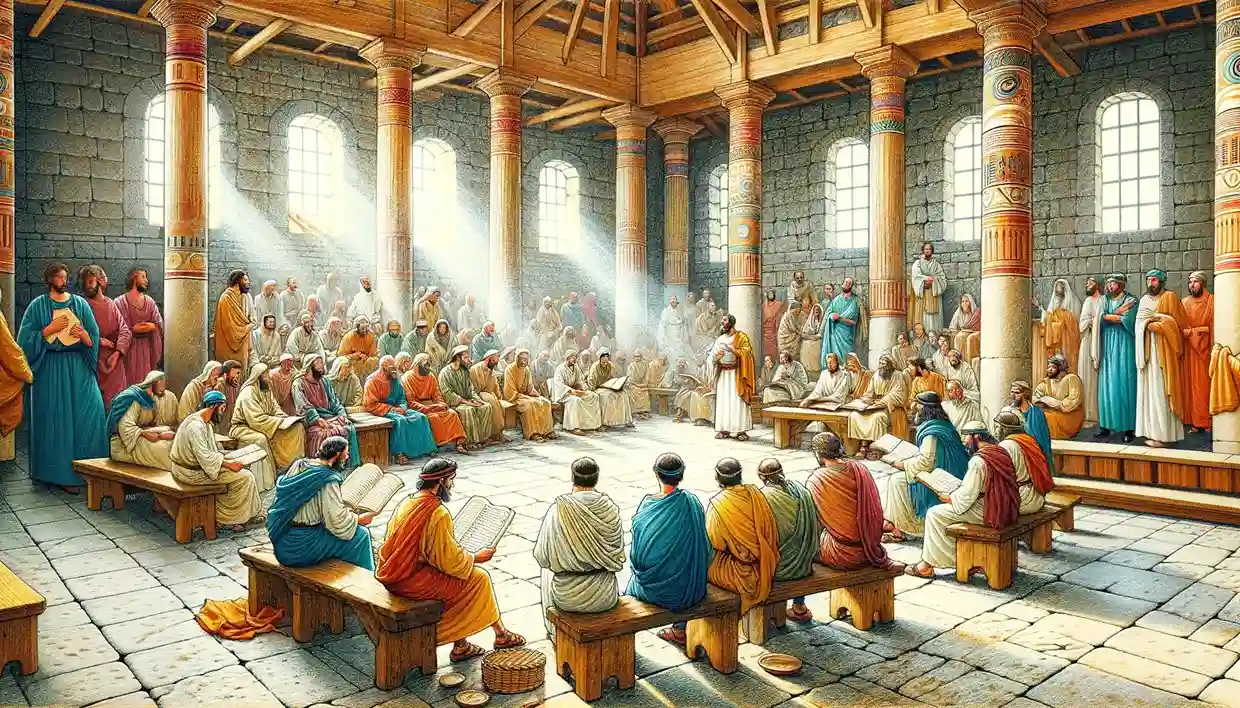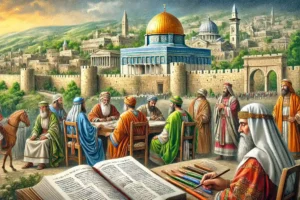
Corinthians: Insights into the Early Corinthian Church
Corinth, a prominent city in ancient Greece, was known for its wealth, commerce, and diverse population. The Apostle Paul established a Christian church there during his missionary journeys. To address various issues within the church, Paul wrote two significant letters, 1 Corinthians and 2 Corinthians. Here are some quick facts about the Corinthians:
- Location: Corinth was a major city in ancient Greece, known for its wealth and commerce.
- Letters: The Apostle Paul wrote two letters to the church in Corinth, known as 1 Corinthians and 2 Corinthians.
- Authorship: Both letters were written by Paul.
- Purpose: Paul addressed issues like divisions, immorality, and questions about Christian doctrine and practice.
- Key Themes: Unity in the church, Christian love (1 Corinthians 13), resurrection of the dead (1 Corinthians 15), and Paul’s defense of his apostleship (2 Corinthians).
- Date: 1 Corinthians was written around AD 55; 2 Corinthians around AD 56-57.
- Challenges: The Corinthian church faced significant challenges, including internal conflicts and moral issues.
- Significant Passages: The love chapter (1 Corinthians 13) and the chapter on the resurrection (1 Corinthians 15).
- Paul’s Visits: Paul visited Corinth multiple times, establishing the church during his second missionary journey.
- Impact: The letters to the Corinthians provide essential teachings on Christian living, church organization, and theology.
Introduction
Corinth was a prominent and influential city in ancient Greece, strategically located on the narrow strip of land connecting the Peloponnese to mainland Greece. Known for its wealth, commerce, and diverse population, Corinth was also a city of significant moral and religious challenges. The Apostle Paul established a Christian church there during his missionary journeys and later wrote two important letters, 1 Corinthians and 2 Corinthians, to address various issues within the church. Here is a detailed biblical analysis of the Corinthians.
Historical and Cultural Context
Corinth was a bustling commercial hub, known for its strategic location and two harbors, Lechaion on the Corinthian Gulf and Cenchreae on the Saronic Gulf. The city was famous for its wealth, luxury, and moral decadence. It was a melting pot of different cultures and religions, which included a large Jewish population and various pagan temples, the most famous being the Temple of Aphrodite.
Founding of the Corinthian Church
Paul first visited Corinth around AD 50-52 during his second missionary journey (Acts 18:1-18). He stayed for 18 months, working as a tentmaker and preaching the Gospel. Paul initially preached in the synagogue but turned to the Gentiles after facing opposition from the Jewish community. His efforts led to the establishment of a diverse and growing Christian community in Corinth.
1 Corinthians
Authorship and Date: Written by Paul around AD 55 while he was in Ephesus during his third missionary journey (1 Corinthians 16:8).
Purpose: Paul wrote 1 Corinthians to address various issues that had arisen in the church. These included divisions among believers, moral lapses, disputes over spiritual gifts, and questions about the resurrection.
Key Themes and Issues:
- Divisions in the Church: Paul addresses the factionalism within the church, urging unity and emphasizing that Christ is the foundation of their faith (1 Corinthians 1:10-13).
- Sexual Immorality: Paul confronts cases of sexual immorality and urges the church to uphold moral purity (1 Corinthians 5:1-13; 6:12-20).
- Marriage and Singleness: Paul provides guidance on marriage, celibacy, and divorce (1 Corinthians 7).
- Idol Food: He addresses the issue of eating food sacrificed to idols, emphasizing the importance of not causing others to stumble (1 Corinthians 8).
- Spiritual Gifts: Paul discusses the variety and purpose of spiritual gifts, stressing the importance of love as the greatest gift (1 Corinthians 12-14).
- The Resurrection: Paul provides a detailed exposition on the resurrection of the dead, affirming the bodily resurrection of Jesus and its implications for believers (1 Corinthians 15).
Significant Passages:
- The Love Chapter: 1 Corinthians 13, often called the “Love Chapter,” describes the nature of true Christian love.
- The Resurrection Chapter: 1 Corinthians 15 is a foundational text on the resurrection, explaining its centrality to the Christian faith.
2 Corinthians
Authorship and Date: Written by Paul around AD 56-57, possibly from Macedonia.
Purpose: Paul wrote 2 Corinthians to defend his apostleship, address further issues within the church, and encourage the believers in their faith and ministry.
Key Themes and Issues:
- Paul’s Defense of His Apostleship: Paul defends his authority as an apostle, recounting his sufferings and the legitimacy of his ministry (2 Corinthians 10-12).
- Reconciliation and Forgiveness: Paul urges the church to forgive and restore a repentant sinner (2 Corinthians 2:5-11).
- Generosity in Giving: He encourages the Corinthians to contribute generously to the collection for the Jerusalem church (2 Corinthians 8-9).
- New Covenant Ministry: Paul contrasts the old covenant with the new, highlighting the transformative power of the Spirit (2 Corinthians 3).
- Strength in Weakness: Paul shares his personal struggles and revelations, emphasizing that God’s power is made perfect in weakness (2 Corinthians 12:7-10).
Significant Passages:
- The Ministry of Reconciliation: 2 Corinthians 5:17-21 speaks of believers as new creations in Christ and their role as ambassadors of reconciliation.
- Paul’s Thorn in the Flesh: 2 Corinthians 12:7-10 reveals Paul’s experience of a “thorn in the flesh” and his reliance on God’s grace and strength in his weakness.
Challenges Faced by the Corinthian Church
The Corinthian church faced numerous challenges, reflecting the broader social and moral environment of the city. Issues of sexual immorality, divisions, disputes over spiritual gifts, and theological confusion were prevalent. Paul’s letters address these challenges head-on, providing practical and theological guidance to help the Corinthians navigate their complex context.
Paul’s Visits to Corinth
Paul visited Corinth multiple times, establishing and nurturing the church. His first visit was during his second missionary journey, where he stayed for 18 months. He returned during his third missionary journey, as mentioned in Acts 20:2-3, and possibly made a brief, painful visit referenced in 2 Corinthians 2:1.
Impact of the Letters
The letters to the Corinthians are some of the most important writings in the New Testament. They provide essential teachings on church unity, moral conduct, the nature of spiritual gifts, the importance of love, and the hope of the resurrection. These letters have had a profound impact on Christian theology and practice throughout history.
Conclusion
The Corinthians and the letters addressed to them by Paul offer a deep and insightful look into the early Christian church’s struggles and growth. Paul’s guidance to the Corinthian believers, rooted in both practical and theological wisdom, continues to resonate with and instruct Christians today. The city’s cultural and moral landscape, combined with the diverse makeup of the church, provided a unique context for Paul’s teachings, making the letters to the Corinthians invaluable resources for understanding early Christianity and its development.



